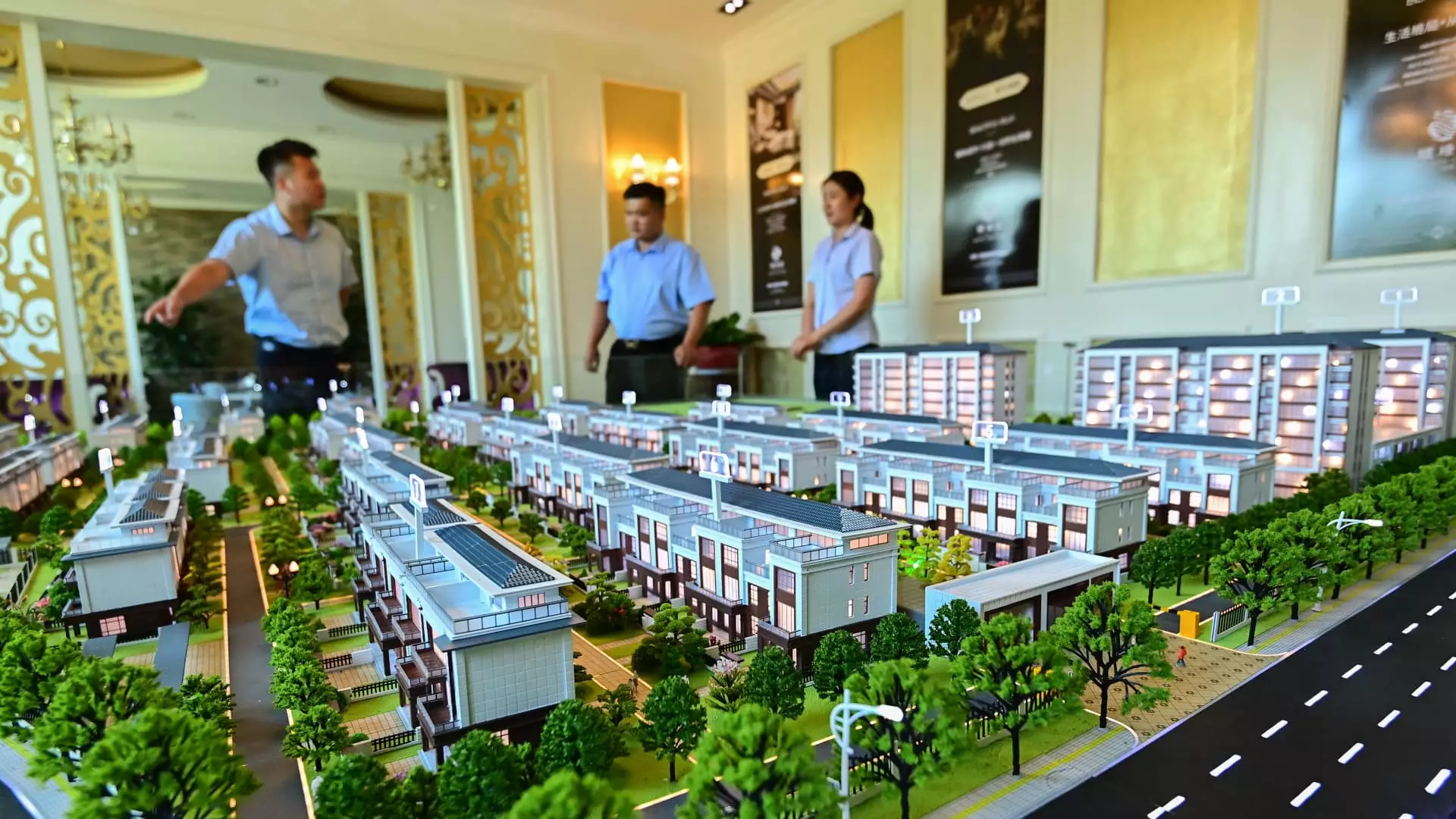China’s real estate market, once a juggernaut driving the world’s second-largest economy, now finds itself ensnared in a quagmire of stagnation and uncertainty. For years, the sector has faced increasing headwinds, but the convergence of an aging population and declining birth rates casts a new, dark shadow over its future. As Goldman Sachs projects a sustained demand suppression for new homes, the underlying issues mirror a broader narrative of demographic collapse—a narrative that leaves the affluent property market in a precarious position.
The numbers are unsettling. Goldman Sachs anticipates that demand for new homes in urban China will remain at a mere 5 million units a year, a stark decline from the 20 million peak in 2017. As the demographic landscape shifts with fewer young families entering the housing market, it’s evident that the golden age of real estate prosperity is irrevocably behind us. The projected decline in population—set to drop to below 1.39 billion by 2035—echoes through the empty buildings of erstwhile bustling cities, revealing a tale of lost ambitions and diminishing returns.
Demographic Dilemma and Economic Stagnation
Analysts like Tianchen Xu have pointed to multiple factors contributing to this demographic crisis. High costs of living, stagnant wages, and a social security system that offers little solace have deterred young couples from expanding their families. This decline isn’t merely a trend; it’s a seismic shift that reflects deep-rooted societal changes. The lifting of the one-child policy in 2016 was never going to be a panacea. Despite government initiatives to encourage larger families, the repercussions of economic insecurity outweigh any monetary incentives the state can provide.
China’s serious commitment to changing this trajectory should be applauded, but it remains fundamentally flawed. The focus has been on financial incentives rather than addressing the social realities that hinder family growth. Parents are delaying marriage and childbearing, driven by a modern ethos that prizes individual achievement over traditional family structures. This hasn’t just detrimental effects on housing demand but poses an existential question about the very fabric of Chinese society.
Education: A Critical Player in Housing Demand
The educational landscape is also undergoing a transformational decline, with thousands of kindergartens and elementary schools shutting down. The statistics are stark: over 36,000 kindergartens closed in the last two years, with a noticeable drop in preschool enrollment by more than 10 million. This decline ripples through the once lucrative school-adjacent housing market. The premiums once commanded for properties near reputed schools are evaporating as fewer families vie for these homes, drastically affecting property values.
A personal narrative encapsulates this ongoing tragedy. A mother in Beijing, after paying double the city’s average apartment price to secure her son’s entry into a prestigious elementary school, has now seen her home’s value plummet by 20%. It’s a cruel reminder of the fleeting nature of wealth and ambition in an increasingly unforgiving economic climate.
The Unraveling of Investment Confidence
As the property market continues to underperform, investor confidence is waning. Goldman Sachs predicts that property owners will likely shift to being net sellers in a landscape increasingly marked by falling prices. The once-bustling market of buy-and-hold investment schemes has morphed into a fear-laden environment where property owners are hastily reevaluating their portfolios. For many, the notion of a sound investment has disintegrated into a mirage—an illusion shattered by demographic realities.
The staggering 11% year-on-year decrease in new home sales across 30 major cities in the first half of this month only corroborates concerns over the health of the sector. Despite attempts by central and local governments to stimulate growth, the prevailing sentiment is one of pessimism and caution. Even the baying tide of urbanization appears to offer limited respite—urban housing demand may remain moderate at best, failing to generate the requisite momentum needed to uplift stagnant property values.
A Long Road Ahead
While some analysts like William Wu argue that the market drag isn’t imminent and that ongoing urbanization and housing upgrades might mitigate some of the demographic pressures, the overarching reality remains stark. A market rooted in declining birth rates, rising costs, and demographic shifts spells trouble for the country’s economy. It begs the question: Is it time for a societal introspection? Or are we content to witness the unraveling of what was once a pillar of economic might?
As China navigates this conundrum, it must confront the stark truth that economic growth cannot thrive without a robust population foundation. In the relentless pursuit of modernization, has the nation overlooked the basic tenets of demographic sustainability? The answer holds profound implications for the future of not only real estate but the very essence of Chinese society itself.

Leave a Reply